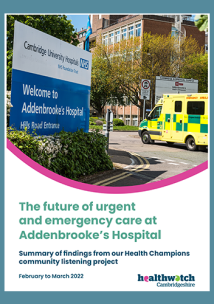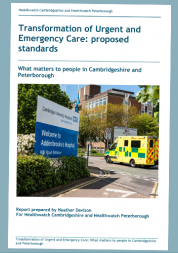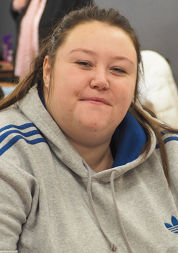The future of urgent and emergency care at Addenbrooke’s

The A&E or Emergency Department (ED) at Addenbrooke’s Hospital is open 24 hours a day, 365 days a year for the treatment of serious and potentially life-threatening conditions.
The department is busier than ever and faces increasing pressures in treating patients due to the lack of space and resources available. Improving emergency care is a top priority for the hospital which is planning to increase capacity within its ED by 2025 and reduce crowding.
This project was funded by the NHS to help inform the future design of the emergency department at Addenbrooke’s.
What we found
Overall people said they were happy with the care they received at the Accident and Emergency (A&E) department, with praise and thanks for staff.
A lot of the patients were confused or in great pain, but the doctors and nurses treated them with kindness and respect. I can't praise them enough.
Whilst most people had a positive experience of treatment and going home, people shared concerns around long waits for treatment, poor communication during the waiting period and the poor quality of the waiting environment.
Ideas to improve care
Local people suggested the following ideas to improve care in A&E:
- Redesign the waiting environment to make it a more open, light and inviting space.
- Better information and signage telling people what to expect when they arrive in the department and what facilities are available.
- Improve access for disabled people.
- Better communication about waiting times during your stay in the department.
- A separate entrance and waiting environment for children and young people.
They also called for the provision of more local services, such as minor injuries units, and better access to GP appointments.
Waiting for care
People told us that the lack of communication about the length of their wait, rather than the long wait itself, was often the most difficult part of the A&E experience.
Some avoided going to get food or taking toilet breaks as they were worried that they would “miss being called”.
Better access for disabled people
Disabled people and their carers raised concerns about difficulties they had waiting for care, including a lack of space for wheelchair users and problems knowing when they were being called for treatment.
I am hard of hearing and found it difficult to understand what was being said.
A call for “more support for people that have hidden disabilities” was also made by
some patients who noted that “A&E is full of noise bright lights, lots of people, and lots of busyness” which not all people can tolerate.
Meeting children and young people's needs
Young people told us they found the A&E environment noisy, confusing and bewildering and some did not feel safe. They reported that there was little to do between long waits for assessment and treatment and that waiting areas were uncomfortable.
Parents and guardians, as well as some attending without children also suggested that children should have a separate entrance, waiting and treatment area to better meet their needs.
I do not think it appropriate that children have to queue with adults some of whom were in distress for various reasons...as they should not be exposed to traumatic situations.
About the Health Champions
This community listening project was co-produced by a team of 12 local Health Champion volunteers from Cambridge, South and East Cambridgeshire.
They co-designed the questions we asked local people and promoted the call for experiences in their communities.
This is the first Health Champion project report. The volunteers are now developing a project to help the local NHS and care services tackle health inequalities.
What happens next?
This project was jointly funded by South Integrated Care Partnership (SICP)
and Addenbrooke’s Hospital. SICP is a partnership of organisations responsible for planning health and care services for people in the southern part of Cambridgeshire, including East Cambridgeshire.
We have shared the findings of this report with them to support their aim to provide excellent emergency care at Addenbrooke's.
“The South Integrated Care Partnership and Addenbrooke’s want to thank everyone involved in gathering this feedback. Delivering excellent emergency care is a core priority at Addenbrooke’s.
We recognise the past few years have been exceptionally difficult for both patients and staff. We have made some immediate changes to respond to increasing demand, such as expanded same day emergency care, and virtual appointments for urgent care.
However, we have ambitious plans to improve the service over the longer term, including redeveloping our facilities and buildings.
The feedback in this report will directly inform the design of a future emergency department, while helping us identify what else we can improve in the meantime.”
Read the report
You can download our report free of charge below. Please contact us if you would like a copy of this report in a different format.

